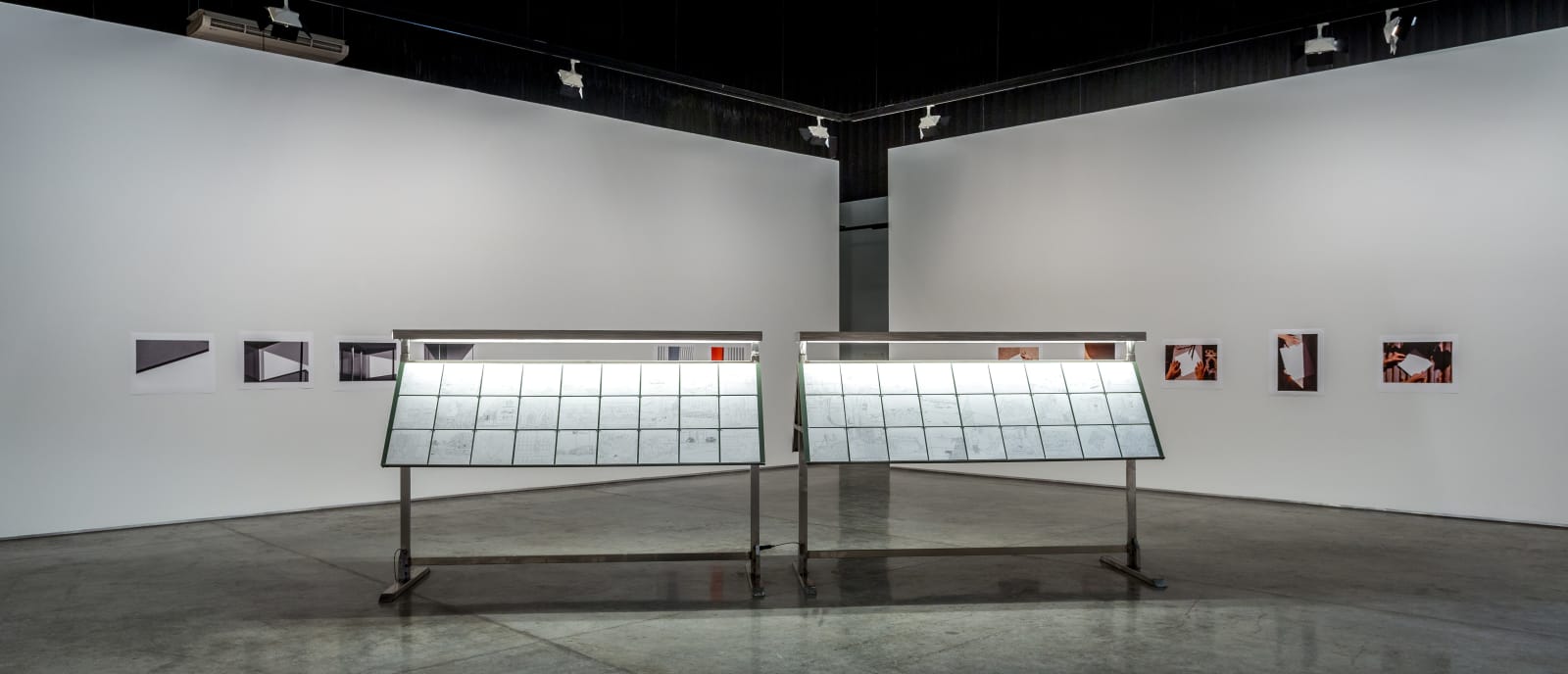Windows 2011-12, 2011-12
Set of 108 drawings
Graphite on paper
Graphite on paper
25 x 25 cm each
In measured graphite lines on carbon paper, Mohammed Kazem traces scenes from photographs he has taken around the United Arab Emirates since 2003. These original photographs were accumulated by Kazem...
In measured graphite lines on carbon paper, Mohammed Kazem traces scenes from photographs he has taken around the United Arab Emirates since 2003. These original photographs were accumulated by Kazem from trips around the seven Emirates. The original photographs show construction sites, busy highways, tired workers seated at the side of the road, as well as the private and public social life of the country’s globalised population. But Kazem’s traced drawings lack colour, however, and have a sense of anonymity and unnatural precision of line that contrasts with the hot or frenetic scenes depicted.
As with his previous works (notably Directions and Photographs With Flags and an ongoing engagement with using GPS coordinates), Kazem uses an intentionally cold and distancing manner to interpret his environment. The resulting anonymity of these traced, outlined scenes emphasises the artist’s own sense of distance and anonymity in relation to the rapid urbanisation that the original photographs depict. Drained of colour, the images express a creeping uniformity of environment, as if the place itself has become ungraspable or beyond reach, and in this we find an honest response to the country’s change from the perspective of a local.
Proceeding from Kazem’s 2003 photographic series Window, in which he charted the construction of a residential tower as it rose into view through his apartment window, these works on paper more broadly chart a prolonged period of time in the history of the country. They record unspecific yet key moments in the drastic urban and social changes that the UAE has undergone in the last 12 years. In this way, the images collectively resemble a sequential storyboard of disparate scenes in the UAE’s contemporary history.
Kazem, inspired by the documentary function of photography and film, conflates these mediums to animate still frames of pencil drawings on carbon paper in which myriad settings and scenarios are set in a grid. The narratives multiply and become animated as reading the works becomes like reading words in a sentence, they can be rearranged to create new trajectories and new meanings. In the artist's words: "When you move your head you are connecting it like words in a sentence, you’re animating it. It’s not like an Arabic or English novel you don’t have to read it left to right or right to left. So it’s a visual sentence that any audience can read, they become jumal basariya (visual sentences)”.
As with his previous works (notably Directions and Photographs With Flags and an ongoing engagement with using GPS coordinates), Kazem uses an intentionally cold and distancing manner to interpret his environment. The resulting anonymity of these traced, outlined scenes emphasises the artist’s own sense of distance and anonymity in relation to the rapid urbanisation that the original photographs depict. Drained of colour, the images express a creeping uniformity of environment, as if the place itself has become ungraspable or beyond reach, and in this we find an honest response to the country’s change from the perspective of a local.
Proceeding from Kazem’s 2003 photographic series Window, in which he charted the construction of a residential tower as it rose into view through his apartment window, these works on paper more broadly chart a prolonged period of time in the history of the country. They record unspecific yet key moments in the drastic urban and social changes that the UAE has undergone in the last 12 years. In this way, the images collectively resemble a sequential storyboard of disparate scenes in the UAE’s contemporary history.
Kazem, inspired by the documentary function of photography and film, conflates these mediums to animate still frames of pencil drawings on carbon paper in which myriad settings and scenarios are set in a grid. The narratives multiply and become animated as reading the works becomes like reading words in a sentence, they can be rearranged to create new trajectories and new meanings. In the artist's words: "When you move your head you are connecting it like words in a sentence, you’re animating it. It’s not like an Arabic or English novel you don’t have to read it left to right or right to left. So it’s a visual sentence that any audience can read, they become jumal basariya (visual sentences)”.
Exhibitions
2017 Receiving and Collecting, Gallery Isabelle van den Eynde, Dubai
